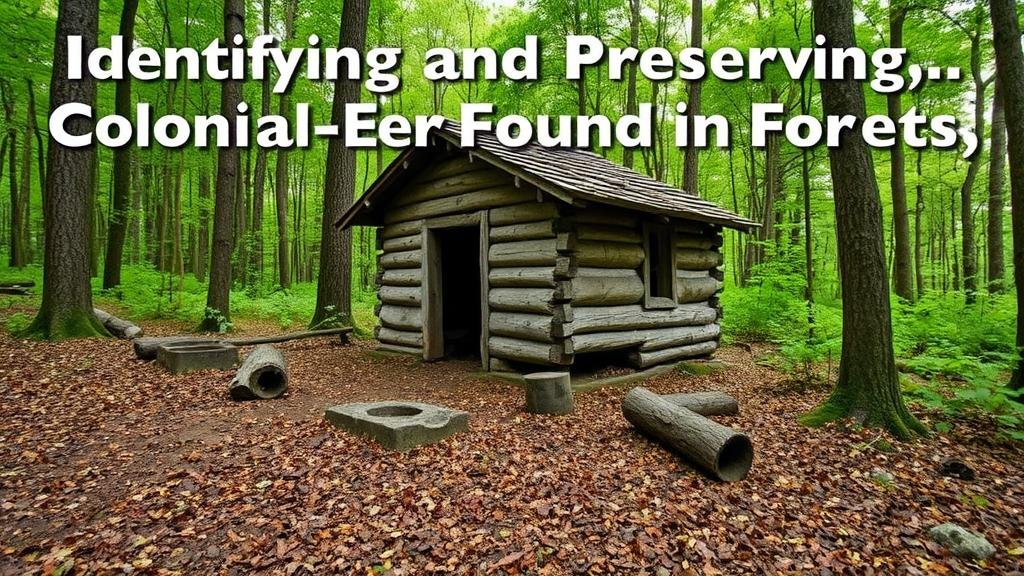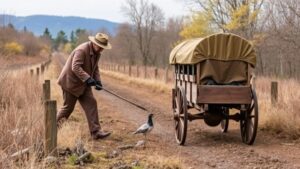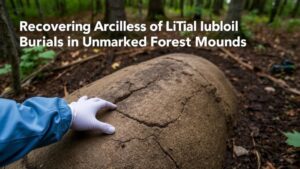Identifying and Preserving Colonial-Era Relics Found in Forests
Identifying and Preserving Colonial-Era Relics Found in Forests
The forests of North America and other regions are often considered mere natural wonders, but many contain a rich tapestry of human history, especially from the colonial era. These areas can be treasure troves of artifacts, architecture, and relics that provide deep insights into the social, economic, and cultural frameworks of the time. This article delves into the process of identifying these relics and emphasizes the importance of their preservation for future generations.
The Significance of Colonial-Era Relics
Colonial-era relics are crucial for understanding historical trends, social dynamics, and even indigenous interactions. can include, but are not limited to, remnants of structures, farming tools, pottery, and personal items. According to the National Park Service, thousands of colonial-era sites are documented across the United States. Preservation of these relics aids in educating the public about the past and enhancing cultural heritage tourism.
Identification of Relics
Identifying colonial-era relics involves a combination of historical research, field surveys, and artifact analysis. Here are some key steps:
- Historical Research: Start with archival research to understand the historical context of the area. Local libraries, historical societies, and online databases may offer maps, documents, and descriptions of colonial settlements.
- Field Surveys: Conduct reconnaissance of suspected areas where relics may be present. Look for signs of past human activity, such as changes in vegetation patterns or unusual soil disturbances.
- Artifact Analysis: Once artifacts are collected, they should be analyzed to determine their age, origin, and material composition. Tools like radiocarbon dating and thermoluminescence dating can provide valuable information about their temporal context.
For example, a field survey in Virginias colonial-era woodlands revealed ceramic shards that, after analysis, traced back to European manufacturing during the 18th century. This type of discovery can illuminate economic exchanges between colonists and indigenous peoples.
Preservation Techniques
The preservation of colonial-era relics is a complex endeavor that requires a multi-faceted approach. Here are several widely adopted techniques:
- Site Management: Establish protective measures to safeguard relic locations from natural threats and human activities, such as logging and urban development.
- Artifact Conservation: Properly catalog and store found artifacts in controlled environments. Conditions such as humidity and temperature should be monitored to prevent deterioration.
- Public Engagement: Involve local communities and education institutions in the preservation efforts. Programs that educate the public about the importance of these relics can enhance support for their protection.
Preserving a colonial graveyard, for example, requires balanced site management to restrict access while also allowing for educational tours that convey its significance. So, engagement with the community can foster a collective sense of responsibility and stewardship.
Challenges in Preservation
Despite the clear value of colonial-era relics, various challenges hinder preservation efforts:
- Environmental Threats: Climate change, deforestation, and natural erosion pose significant risks to relics found in forested areas. Each of these can accelerate the decay of artifacts and disrupt archaeological sites.
- Resource Limitations: Limited funding and personnel can restrict the ability to survey, excavate, and preserve important sites. Many organizations rely on volunteers, which can vary in their expertise and availability.
For example, the extinction of certain animal species due to environmental changes can lead to the rapid overgrowth of vegetation that obliterates visible remains of historical sites. This presents both a preservation challenge and an opportunity for broader environmental discussions.
Real-World Applications
Successful instances of identifying and preserving colonial-era relics can encourage similar initiatives globally. One notable case involves the restoration of colonial-era shipwrecks in British Columbia. Researchers not only analyzed the artifacts recovered from these sites but also educated the public through exhibitions and digital platforms, showcasing the intertwined stories of maritime colonial history and indigenous peoples.
Actionable Takeaways
To wrap up, identifying and preserving colonial-era relics is not only a scholarly pursuit but a communal responsibility. Here are some actionable takeaways:
- Engage with local historical societies to foster collaborative research and identification of relics.
- Advocate for preservation by supporting policies that protect archaeological sites and raise awareness of their importance.
- Promote community involvement through volunteer programs focused on artifact cleanup and preservation.
By working together, communities can ensure that colonial-era relics continue to inform and educate future generations about their shared history.



